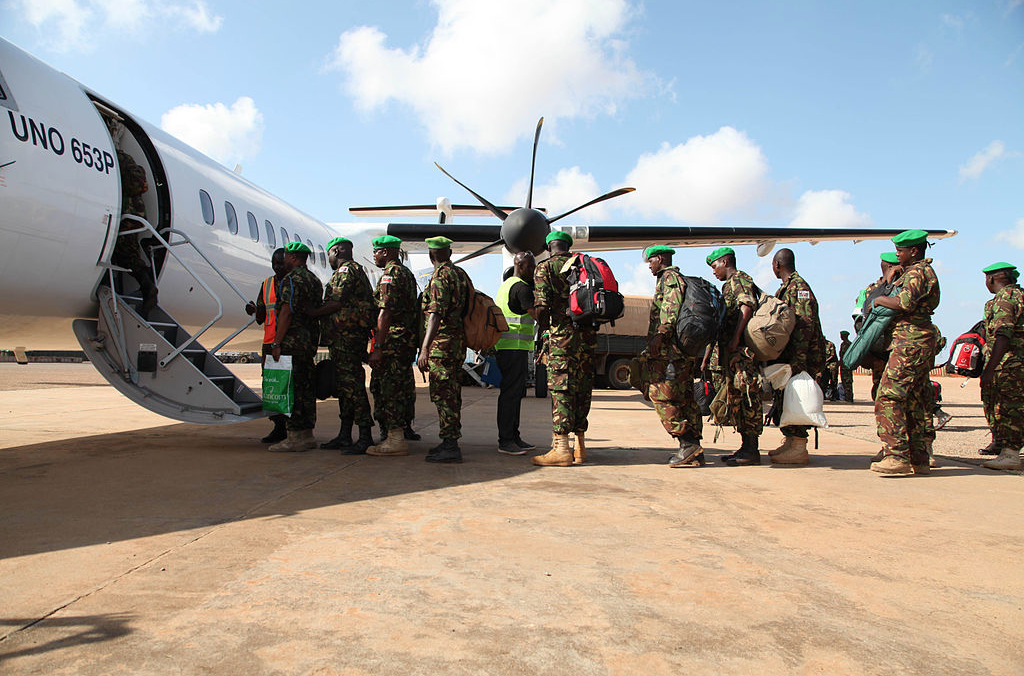AMISOM – Strength


AMISOM has four components: the military, the police, a civilian section, and a humanitarian section.[i] Currently the military component is comprised of troops drawn from Uganda, Burundi, Djibouti, Kenya, and Ethiopia who are deployed in six sectors covering south and central Somalia. According to AMISOM, these are the current force levels and areas of operation:
Force Levels 2020
Uganda The Ugandan contingent remains the largest contingent in AMISOM with 6,223 troops based in Sector 1 which comprises Banadir (Mogadishu), Middle and Lower Shabelle regions.
Ethiopia The Ethiopia National Defence Forces (ENDF) has provided 4,395 uniformed personnel located in Sector 3.
Burundi The Burundi contingent is the second largest within AMISOM with 5,432 troops. Based in Baidoa, the contingent is primarily responsible for operations in Sector 3, which covers Bay and Bakool regions but also maintains troops in Sector 1 where they work closely with the Ugandan forces.
Kenya There are 3,664 troops from Kenya located in Sector 2, which has its headquarters in the port city of Kismayo, which is comprised of Lower and Middle Juba.
Djibouti The country has deployed a contingent of 960 troops into Somalia and they are based in Beletweyne which serves as Sector 4 headquarters which covers the Hiiran region.
Total 20,674
Source: AMISOM Military Component (accessed on September 21, 2020)
| There were varying rationales for each country to contribute to the AMISOM mission. One study suggested: …there is no single or uniform explanation for why these six states joined AMISOM. Nevertheless, the most common official justifications based on assertions that events in Somalia posed a direct security risk to the TCCs and normative commitments to African solidarity were often less important than other unacknowledged or downplayed factors. Specifically, a combination of institutional benefits (related to the armed forces), political advantages (concerning prestige and partnerships with key external actors), and economic support (for individual peacekeepers and the domestic security sector) was generally more important in understanding why these six states became AMISOM TCCs. Joining AMISOM did help alleviate some regional security concerns but more important were the tangible benefits the decision brought at home to both the troop-contributing governments and their militaries. |
The police component is tasked “to train, mentor, monitor and advise the Somali Police Force (SPF) with the aim of transforming it into a credible and effective organization adhering to strict international standards.”[ii]AMISOM has several Formed Police Units (FPUs) from Uganda, Nigeria, and Sierra Leone which play a critical role in improving security in liberated areas through joint patrols with the SPF. Individual Police Officers (IPOs) come from Uganda, Nigeria, Ghana, Sierra Leone, Kenya and Zambia.
The civilian component of AMISOM is led by the Special Representative of the Chairperson of the African Union Commission (SRCC), and is comprised of the following pillars:
(1) Mission Support
(2) Political Processes
(3) Stabilisation and Early Recovery
(4) Protection, Human Rights and Gender
(5) Security Sector Reform
The humanitarian component fulfills the mission mandate to facilitate access to humanitarian assistance, assisting in the reintegration of internally displaced persons (IDPs) and refugees. AMISOM has worked to secure transport routes including the seaport, airport, and roads around Mogadishu in order to facilitate the delivery of humanitarian assistance.
[i] AU Mission in Somalia website, http://amisom-au.org/#
[ii] Ibid, AU Mission in Somalia
These products are the results of academic research and intended for general information and awareness only. They include the best information publicly available at the time of publication. Routine efforts are made to update the materials; however, readers are encouraged to check the specific mission site at https://amisom-au.org.
Index
Executive Summary / Current Political and Security Dynamics / Recent Situation Updates
Central African Republic Country Profile
Government/Politics / Geography / Military&Security / Economy / Social / Information / Infrastructure
African Union Mission in Somalia (AMISOM)
Senior Leaders of the Mission / Mandate / Strength / Deployment of Forces / Casualties / Mission’s Political Activities / Background / Timeline

CHRISTOPHER FRANK KITAPONDA
Onbehalf of my fellow African i would like to thank UN for providing fund and peacekeeping to our unsettled areas.Nothing we African we can pay you but only God may able to pay you because its huge fund and time you spend to settle our comflicts.Me as the Tanzanian pilice officer lenk of Sergent one day i would like to work together in any mision.Please take me any where where there is a need to increase individual man power